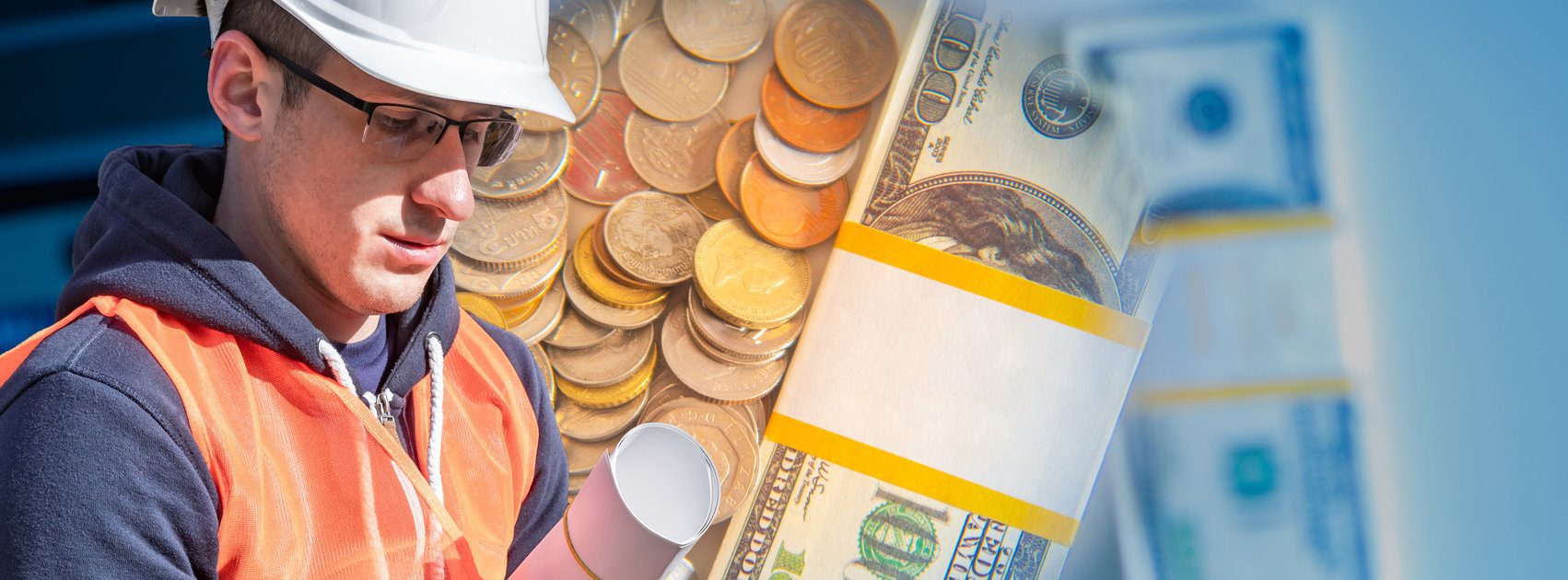Whether you’re replacing older pumps, filling cracks in an access road or driveway, or managing a treatment plant project, you’ve undoubtedly noticed that material prices have been on the rise. Many of us cast blame on the pandemic but are wondering why prices are still rising, seemingly faster than ever.
Two years ago, the main reasons for price increases were driven by the needs of the specific project itself – higher permitting costs due to stricter regulations, higher insurance costs due to the nature of the project risk, higher labor costs due to the complexity or higher safety risk of the project, and so on. But now, the reasons for price increases are compounded.
Reasons for construction cost increases post-COVID:
- Material cost escalations
- Producer Price Index (PPI) increases
- Labor cost escalations (due to high demand for labor)
- Regional shortage of CDL drivers
- Construction demand greater than labor pool
- Equipment delivery delays
- Material shortages
- Uncertainties
Let’s dive deeper into a couple of these reasons.
First, what even is PPI?
Producer Price Index (PPI) is a gauge of inflation released monthly by the US Bureau of Labor Statistics that measures increases to raw material costs faced by the producers of goods and services. The higher the price of the raw materials, the higher the cost to produce the end product, and, therefore, the more impact it has to overall project cost.
These cost increases in raw materials take time to hit the cost of products and create a tremendous amount of uncertainty. Many of the reasons producer-faced costs are rising are the same reasons construction costs are rising – labor shortages, unavailability of raw materials, fuel and other consumable price increases, and so on. Now that available infrastructure funding has increased, the number of projects has also increased, so materials and labor are spread thinner than ever and are unable to keep up, causing costs to rise.
Let’s take a look at the PPI increases for some of the most essential construction materials over the past two years:
| Material | Total Percent Increase Jan 2020 – Jan 2022 | Percent Increase per Year |
|---|---|---|
| Cement & Concrete Product Manufacturing | 11.89% | 5.76% |
| Plywood | 76.49% | 32.85% |
| Iron & Steel | 99.26% | 41.16% |
| Copper Wire & Cable | 32.97% | 15.31% |
| Aluminum Mill Shapes | 31.99% | 14.89% |
Do you have a construction project coming up?
Next, let’s talk about uncertainties – everyone’s favorite COVID buzzword. As we’re gathering supplier quotes to prepare for Bid Day, we’re hearing things no one wants to hear:
- Prices guaranteed for Bid Day only and are subject to change afterward.
- Purchase agreements must be signed on Bid Day.
- Delivery dates will not be guaranteed.
- Prices will only be guaranteed when the product hits the ground at the jobsite.
These uncertainties can mean a lot of risk – financial, project, and schedule risk – for the contractor, engineer/architect, and owner to take on. So, what can we do about it?
We can plan ahead and we can stay flexible. And, while there is no one-size-fits-all solution, we’ve found if we focus on these items, we have the best chance for a successful project.
Planning ahead:
- Identify and order long lead time items as early as possible.
- Watch PPIs for the products you need to purchase.
- Purchase materials on the rise ASAP and store them onsite or at one of our facilities.
- Wait to purchase materials with a falling PPI.
- Sequence construction activities in a way that allows us to complete everything we can before the long lead time items arrive.
- Consider delaying or accelerating your project, depending on the project necessity and the variability in the market.
- Update your GMP or Opinion of Probable Cost immediately before sending your project out to bid so you have a better idea of what to expect.
- Write bid packages in a way that protects you as much as possible from material escalations.
- Watch PPIs for the products you need to purchase.
Staying flexible:
- Factor both equipment costs and delivery times into your project schedule expectations.
- Research and consider alternative materials of construction.
- For pipe-heavy treatment plant projects, compare different pipe materials (ductile iron, steel, concrete, and PVC) where your applications can be flexible.
- For plants or pump/lift stations with large electrical scopes, have your electrician price both aluminum and copper wire so you can compare the costs.
- For a new administration building or lab, consider different exterior materials such as CMU or precast.
- Research multiple qualified equipment manufacturers and add them to your specification.
- Put a price tag on quality – is the filet mignon worth it, or can I live with chicken?
- Put a price tag on operations and maintenance – perhaps it’s more cost-effective to bring the project scope up to standards now but replace it later with better when the items are more affordable.
- Be sensible with your cost decisions and work efficiently.
- Research and consider alternative materials of construction.
We take pride in providing solutions for our clients and working as a team to come up with the best path forward. When times are uncertain, you need a partner that you trust more than ever to build your project.
Do you have a construction project coming up? Let’s talk about how we can help you plan ahead and create project flexibility.
Latest News


